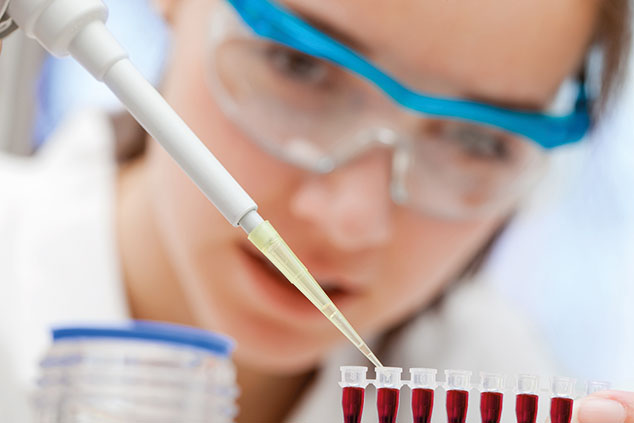
There are rare diseases and then there are ultra-rare diseases. The latter are defined as those which affect one person in 50,000, although in some cases the proportion is as low as one per million. Effective treatments for ultra-rare diseases can command very high prices, which health systems readily pay because only a tiny proportion of the population is affected.
For example, if there are only 5,000 patients who need a life-saving drug costing $400,000 per year, that adds up to annual revenue of $2bn for the maker of the drug, well into blockbuster territory.
Enter Alexion (Nasdaq: ALXN), a biotechnology group specialising in ultra-rare ailments. Alexion’s blockbuster Soliris treats PNH and aHUS, which are life-threatening blood disorders.
About 35% of patients with PNH die within five years. With Soliris, however, patients can have normal or near-normal lifespans – so they typically need the drug for decades, which secures Alexion a recurring revenue stream. The total number of PNH/aHUS patients in North America and Europe combined is only 5,000-10,000, so most GPs will never see a patient with either. As a result the diseases are grossly under-diagnosed.
A promising pipeline
Soliris has also just been approved for a related disease, gMG, a neuromuscular disease, and has been submitted for approval for NMOSD, a severe disease of the central nervous system. But Alexion has more than just one pill in the pipeline. It also boasts Ultomiris, just approved by the US Food and Drug Administration as the only long-lasting treatment for adult PNH (taken every eight weeks compared with every two weeks for Soliris). And Ultomiris has also just completed a successful Phase-III trial (usually the last stage of clinical trials before a drug is approved) for aHUS.
Also on the market are Strensiq for HPP (which causes skeletal abnormalities) and Kanuma for LAL-D (which leads to multiple organ damage). In the advanced pipeline is ALXN1210, a long-lasting treatment for PNH and aHUS, and WTX101 for Wilson’s disease (excessive deposition of copper in the brain and liver). In early clinical development are ALXN1810 and SYNT001, for rare diseases WAIHA, a type of anaemia, and PV, a bone-marrow condition. SYNT001 came with the $400m acquisition of Syntimmune in September 2018. There are another four drugs at the pre-clinical stage.
Alexion invests heavily in research and development, which accounted for $730m, or 17.7%, of sales in 2018. In addition it has broadened its pipeline with takeovers. The mix of organic and acquisition growth has built an impressive portfolio.
Resistance to competition
Alexion can keep competitors at bay owing to patents protecting its marketed drugs (with some Solaris patents extending to 2027), a growing pipeline and the use of its strong cash flow to add to that pipeline. Alexion’s drugs are also biologic (manufactured in a living system, such as a microorganism) rather than chemically made, as most drugs are. The upshot is that it is more difficult for rivals to make generic imitations and gain approval for them once Alexion’s patents expire.
The key risks are the company’s dependence on a small number of drugs, with Soliris expected to account for about 85% of revenues in 2019, and the possibility of competing drugs entering the market. However, the most likely competitor to Solaris has only just started Phase-I trials.
Moreover, Alexion’s long patent protection, first-mover advantage, experienced sales force and good relationships with patients and doctors all bode well. Its markets are expanding as it develops new treatments, patients survive longer on its drugs, and improved diagnosis expands the patient population.
Robust growth at a reasonable price
Alexion’s 2018 results were released last month. Fourth-quarter revenues were up 24% year-on-year, helped by growing sales of Soliris for gMG; these are expected to reach $1.2bn in 2022. Full-year 2018 sales totalled $4.13bn, up 16.3%. US sales comprised 49% of the total; Europe 27% and Asia 10%. Earnings per share (EPS) of $7.92 were up 35.2% on 2017. The company expects 2019 revenue of $4.65bn-$4.70bn, a rise of 13.5%, with EPS of $9.10-$9.30, a rise of 16.2%.
In December Alexion had a strong balance sheet, with cash of $1.8bn compared with debt of $2.8bn. But with free cash flow of $213m, the debt can be serviced and paid down.
Alexion appointed biopharma veteran Ludwig Hantson as chief executive in March 2017. He came from rare-disease specialist Baxalta following stints at top pharma companies Novartis and Johnson & Johnson. The shares cost $135, well down from their mid-2015 high of $206. MarketWatch estimates 2020 EPS as $10.45, giving a forward price/earnings ratio (p/e) of 13. With EPS growth around 15% for 2019 and 2020, that gives an attractive price-to-earnings growth ratio (PEG) of 0.87.
Investment research group Morningstar gives the company a fair value estimate of $172. Alexion is thus an attractive biotech with a strong position in ultra-rare diseases, although its concentrated portfolio and the possibility of pipeline failures makes it a riskier proposition than larger pharma companies with broader portfolios. But the rewards could also be larger.